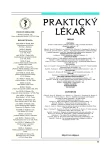Treatment of traumatic lesions of the brachial plexus
Liečba a diagnostika traumatických lézií brachiálneho plexu
Úprava funkcií hornej končatiny tvorí hlavnú prioritu rekonštrukcie nervov pri trakčných poraneniach brachiálneho plexu. Výsledky operácií sú ovplyvnené úrovňou poranenia, typom chirurgického zákroku, vekom pacienta a dobou operácie od úrazu. V práci sa venujeme diagnostike, indikáciám k operáciám a chirurgickému liečeniu.
Kľúčové slová:
brachiálny plexus – chirurgické liečenie.
Authors:
V. Matejčík
Authors‘ workplace:
Neurochirurgická klinika LF UK, Fakultná nemocnica s poliklinikou
akad. L. Dérera, Bratislava, Slovenská republika
Published in:
Prakt. Lék. 2005; 85(2): 82-86
Category:
Of different specialties
Overview
Repair of the function of the upper extremity is the major priority in the reconstruction of nerves in traction injuries of the brachial plexus. Results of surgical intervention are influenced by the level of injury, type of intervention, the patient’s age, and the time lapse between accident and intervention. The paper is devoted to diagnostics, indications for surgical intervention, and to surgical treatment.
Key words:
plexus brachialis – surgical treatment.
Labels
General practitioner for children and adolescents General practitioner for adultsArticle was published in
General Practitioner

2005 Issue 2
- Memantine Eases Daily Life for Patients and Caregivers
- Metamizole at a Glance and in Practice – Effective Non-Opioid Analgesic for All Ages
- Metamizole vs. Tramadol in Postoperative Analgesia
- Memantine in Dementia Therapy – Current Findings and Possible Future Applications
- What Effect Can Be Expected from Limosilactobacillus reuteri in Mucositis and Peri-Implantitis?
Most read in this issue
- Brachyspirae – agents of intestinal spirochetosis
- The diabetic foot and hyperbaric oxygen therapy
- Treatment of traumatic lesions of the brachial plexus
- Inborn anomalies of the coronary arteries: three case reports
